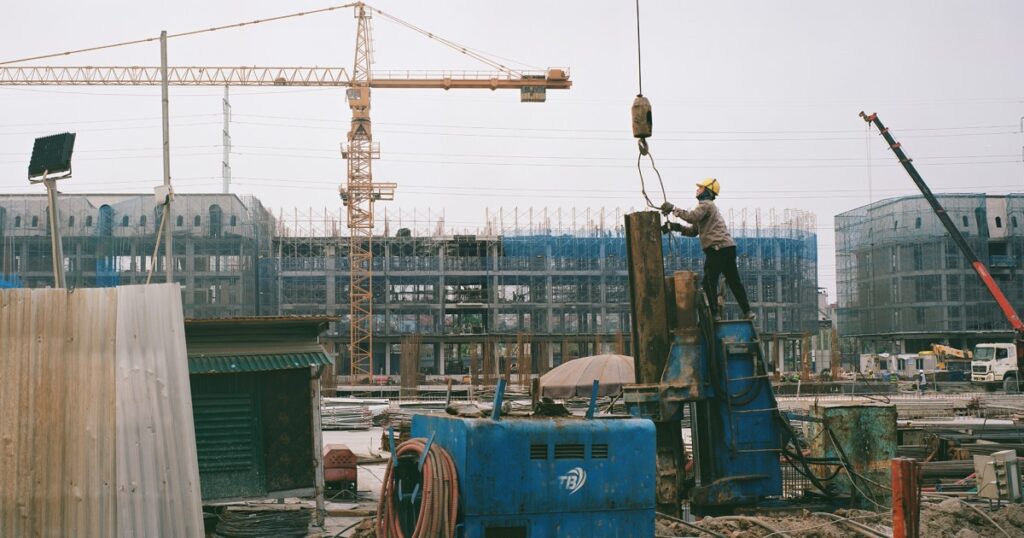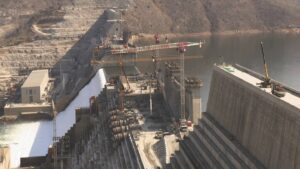
HANOI, Vietnam — Hanoi has no horizon. Blocky apartment towers dissolve into gray fog in the Vietnamese capital, as barges carrying sand inch down the Red River toward makeshift jetties. At street level, the city blurs as if it’s covered in film. The air stings your eyes and smells of chemicals, like chlorine but not quite. When the sun does punch through, it hangs like a red beach ball against the silver sky.
This winter, Hanoi topped global air pollution charts, not once, but repeatedly, exposing the environmental cost of Vietnam’s explosive growth, and briefly earning it the title of the world’s most polluted city. In January, the average air quality index in the city of almost 9 million people was breaching the “hazardous” threshold of 300, shrouding its skyline in fog and prompting warnings from health officials.
The Environmental Cost of Rapid Urbanization
The announcement comes as Vietnam continues to experience rapid urbanization and industrialization. Over the past decade, the country’s economic growth has been one of the fastest in the world, driven by manufacturing and export-oriented industries. However, this growth has come at a significant environmental cost. Hanoi, like many rapidly growing cities, struggles with the dual challenge of maintaining economic momentum while addressing severe environmental degradation.
According to the World Health Organization, air pollution is a major environmental risk to health, contributing to respiratory infections, heart disease, and lung cancer. In Hanoi, the primary contributors to air pollution include vehicle emissions, industrial activities, and construction dust. The city’s geographic location, surrounded by mountains, exacerbates the problem by trapping pollutants in the air.
Expert Opinions on the Crisis
Environmental experts warn that without significant intervention, the situation is likely to worsen. Dr. Nguyen Thi Lan, an environmental scientist at Vietnam National University, emphasizes the need for comprehensive urban planning and stricter environmental regulations. “The current levels of pollution are unsustainable,” she says. “We need to invest in cleaner technologies and enforce stricter emission standards to protect public health.”
“The current levels of pollution are unsustainable. We need to invest in cleaner technologies and enforce stricter emission standards to protect public health.” — Dr. Nguyen Thi Lan
Meanwhile, local government officials have acknowledged the severity of the issue. Plans are underway to increase green spaces in the city and improve public transportation to reduce reliance on motorbikes and cars, which are significant sources of pollution.
Comparisons and Historical Context
Hanoi’s struggle with air pollution is not unique. Cities like Beijing and New Delhi have faced similar challenges as they industrialized. In both cases, government intervention and public awareness campaigns have played crucial roles in reducing pollution levels. Beijing, for example, implemented stringent measures to control emissions from vehicles and factories, leading to a noticeable improvement in air quality over the past decade.
Historically, cities undergoing rapid industrialization have faced similar environmental challenges. The Industrial Revolution in Europe and North America saw significant air pollution issues, which were eventually mitigated through technological advancements and regulatory frameworks. Hanoi’s current situation mirrors these historical precedents, highlighting the need for a balanced approach to development and environmental stewardship.
Future Implications and Solutions
The move represents a critical juncture for Hanoi. As the city continues to grow, the need for sustainable development practices becomes increasingly urgent. Experts suggest that adopting renewable energy sources, such as solar and wind, could significantly reduce the city’s carbon footprint. Additionally, promoting public transportation and non-motorized transport options could help alleviate traffic congestion and reduce emissions.
According to sources, the Vietnamese government is also exploring international partnerships to address the pollution crisis. Collaborative efforts with countries that have successfully tackled similar issues could provide valuable insights and technological support.
Ultimately, the path forward for Hanoi will require a concerted effort from both the government and the public. Raising awareness about the health impacts of air pollution and encouraging community involvement in environmental initiatives will be crucial in driving change.
As Hanoi navigates this environmental challenge, the lessons learned could serve as a blueprint for other rapidly growing cities facing similar issues. The city’s response to its pollution crisis will not only impact the health and well-being of its residents but also shape its future as a sustainable urban center.





